From Bermuda Onions to Yellow Onions, we’re covering the most popular types of onions from A to Z in this helpful guide to onions!
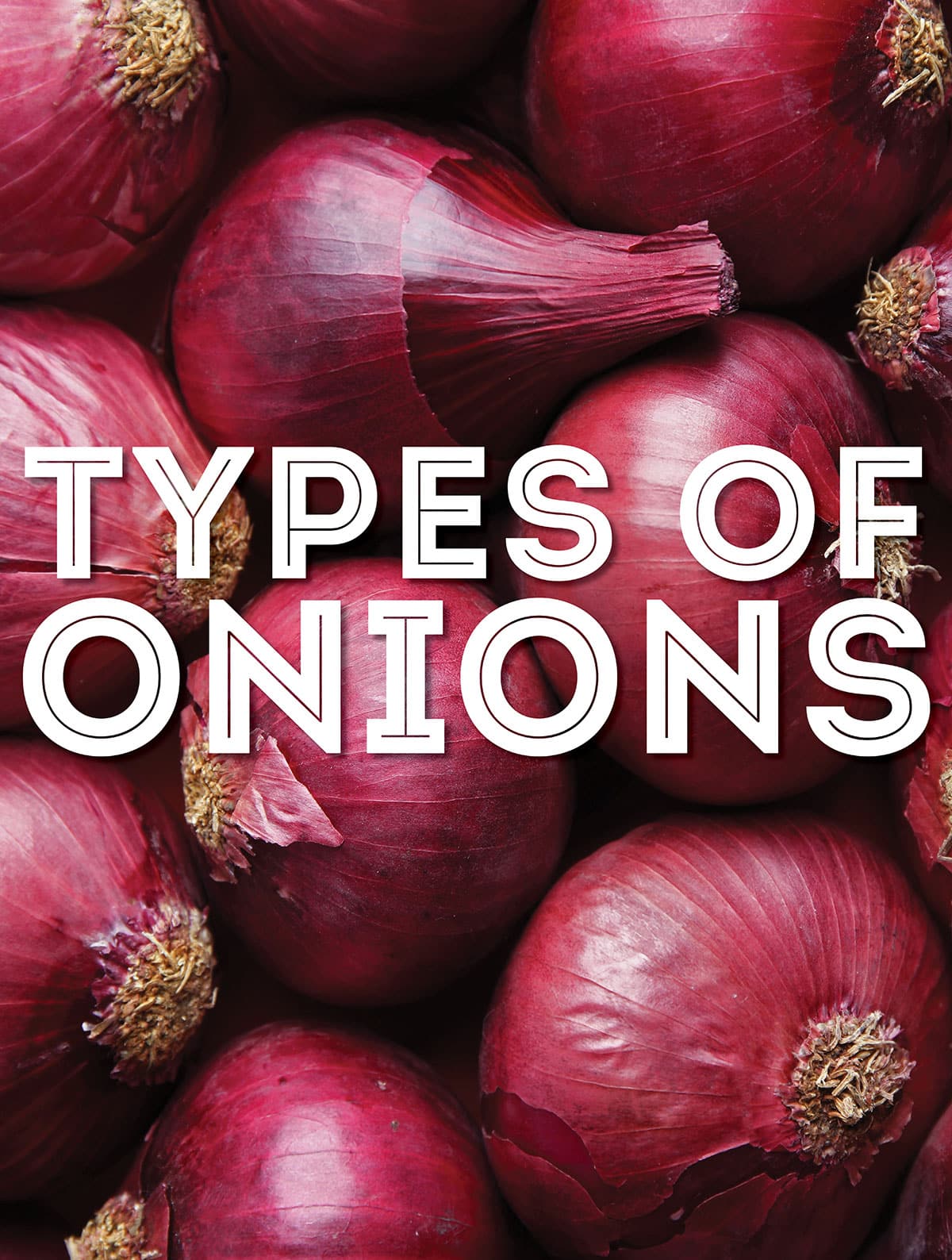
Where do onions come from?
Most food historians believe that onions originated in Central Asia. Some narrow the region down further to Iran or Pakistan. It appears that our ancestors ate wild onions well before recorded history. There is evidence of human consumption as much as 7,000 years ago (which might be why there are so many types of onions today!)
Today China is the world’s largest producer followed closely by India. These are also the world’s most populous nations, so they keep most of their production. The United States is the 3rd largest producer and the biggest importer. We Americans do like our onions. (The largest exporter is the Netherlands!)
How To Use Onions
Onions, botanically speaking, are alliums, which means they are part of the family that includes chives, garlic, leeks, and shallots. We will touch on all of these in this article though some aren’t technically onions (but they are similar enough in use to warrant inclusion here).
Onions are popular worldwide, likely because they are so versatile. They can be roasted, grilled, pickled, caramelized, deep-fried into onion rings, used as burger or sandwich toppings, cut raw into salads! Our favorite? French Onion Soup Pasta!
Storing Onions
You can buy onions individually or in a bag, but either way, there is a pretty good chance that you are going to want to store onions vs using them immediately. Onions will generally last a few weeks in your pantry if it is well-ventilated. You can store them on your counter, but they won’t last quite as long as they do better in cool dark environments.
Onion Trivia!
How many pounds of onions do Americans eat each year (average per person)?
Onion Nutritional Information
Onions are actually reasonably healthy. They don’t have the kind of vitamin and mineral profile that a vegetable like spinach has, but then really what does? Still, they are a solid nutritional component of your cooking. A few of the pertinent numbers are presented below for different types of onions and garlic. Nutrition info is provided for a 100 gram (g) serving.
| Calories | 40 kcal |
| Protein (grams) | 1.1 g |
| Fiber (grams) | 1.7 g |
| Vitamin A (% RDA) | 0% |
| Vitamin C (% RDA) | 12% |
| Vitamin B6 (% RDA) | 6% |
| Calcium (% RDA) | 2% |
| Potassium (% RDA) | 4% |
Different Types of Onions
While there are thousands of varieties of onions, we’re covering the most common types of onions here for your easy cooking reference!
- Bermuda Onion
- Cipollini Onion
- Cocktail Onion
- Creole Onion
- Egyptian Onion
- Green Onion
- Leeks
- Maui Onion
- Mayan Sweet Onion
- Pearl Onion
- Pickling Onion
- Red Onion
- Red Wing Onion
- Shallot
- Spanish Onion
- Sweet Onion
- Torpedo Onion
- Tropea Lunga Onion
- Vidalia Onion
- Walla Walla Sweet Onion
- Welsh Onion
- White Onion
- Yellow Onion
Bermuda Onion
Bermuda onions are easily spotted due to their flat tops and bottoms and short bodies. These white or brown onions are sweet and juicy, and lend themselves well to raw applications such as on salads or as a sandwich topping. While grown in Bermuda, they appear to have originated in the Canary Islands and are today grown widely in the United States (primarily in Texas).
Cipollini Onion
Cipollini onions originated in Italy. They vary in color from white to brown. These are very sweet onions that are often used in French Onion Soup, and are great roasted or caramelized.
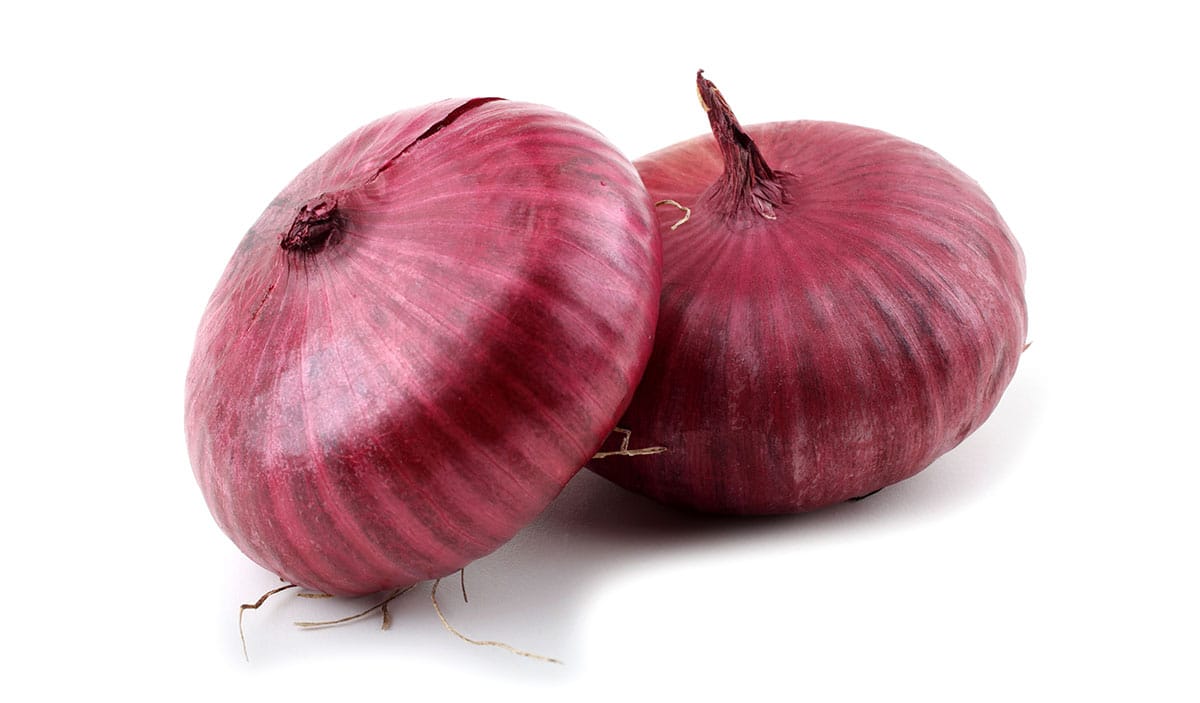
Cocktail Onion
Cocktail onions are normally pearl onions or white Bermuda onions that have been pickled. They are harvested while still immature to ensure a uniform small size. They are mostly white and remain crunchy when pickled.
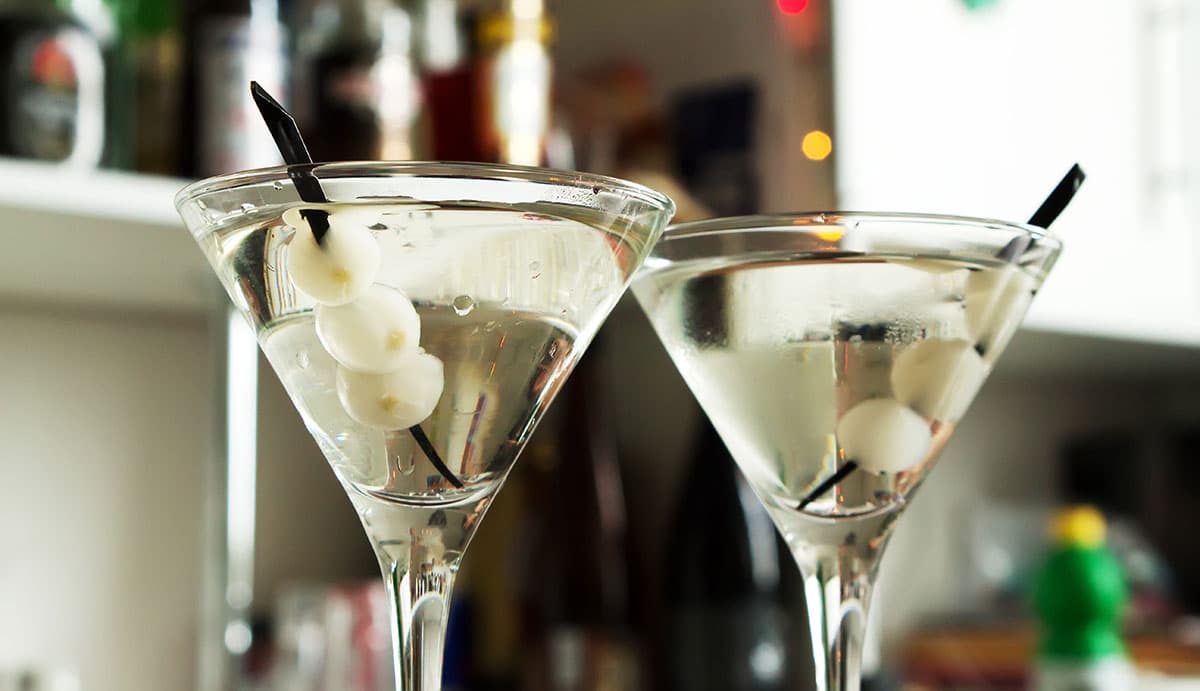
Creole Onion
Also called Red Creole Onions, these small red onions are spicy and great in creole and cajun cuisine which is clearly where their name came from. While sometimes described as intensely flavored, they can be used raw to put a little extra kick in your cuisine.
Egyptian Onion
The Egyptian onion is also known as the Tree Onion. These small onions grow in bunches called bulblets instead of flowering like other onion varieties. As the bulblets grow their stalks bend deeply under the weight and the bulblets plant themselves. Nature is amazing! The bulblets are generally about the size of marbles which is to say less than an inch in diameter. These onions generally have a strong flavor though there is substantial variation and some can be sweet and mild. Tree onions are said to taste much like shallots and can be used similarly in cuisine or pickled.
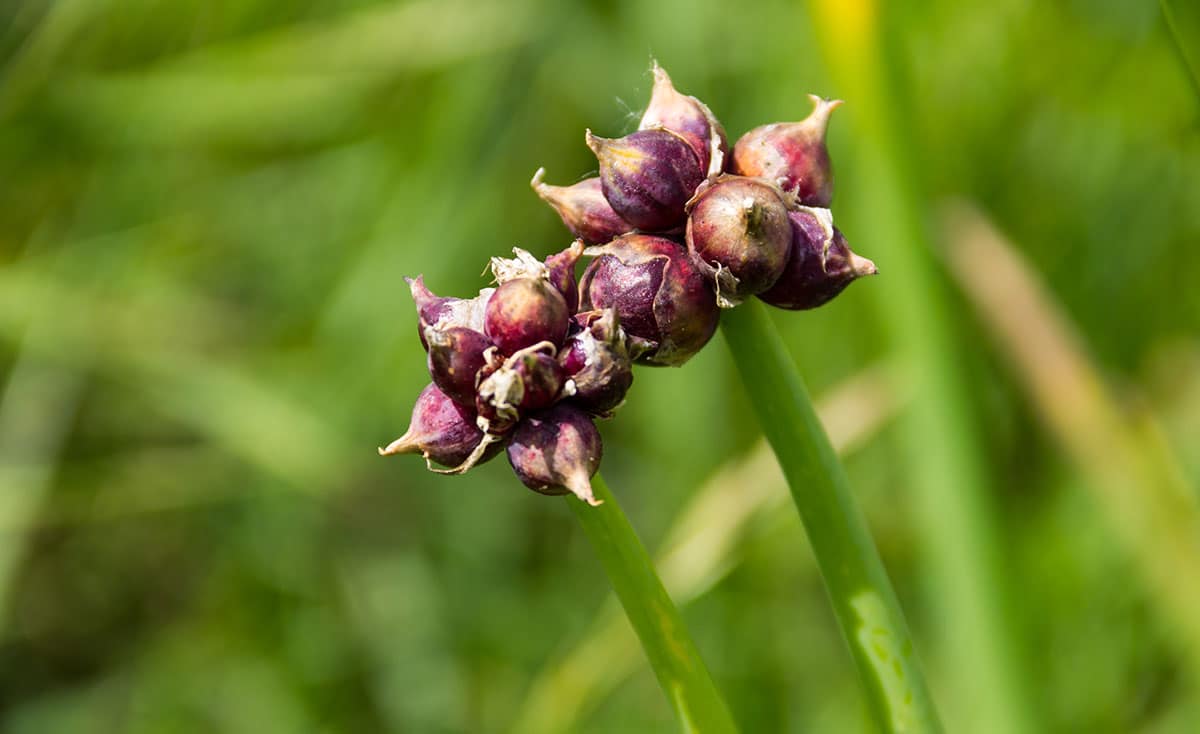
Green Onion
Green onions are immature onions that have either not yet formed a bulb, or their bulb is still quite small. Either way, both the bulb and the green shoot are usable in a variety of cuisines though people often use only the shoots. Our favorite uses are in omelets, soup toppings, savory biscuits, tacos, stir fries, and salsa. Green onions have a peppery taste that is the most mild at the tip of the plant, but becomes juicier as you cut slices closer to the bulb. There is a slight art to cutting green onions we show here How to Cut Green Onions.
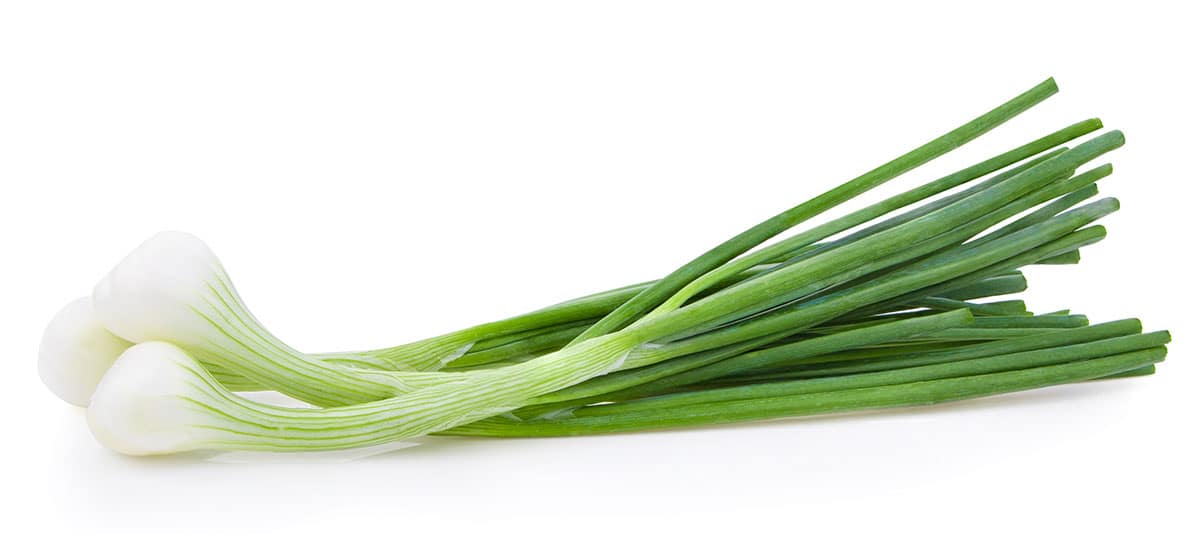
Leeks
You might mistake leeks for green onions as they are quite similar to green onions. Leeks are a good bit larger and a bit milder with subtle sweet undertones. Leeks are also more fibrous than green onions, so they require longer cook times to become tender. The white and light green parts are typically eaten while the darkest ends of the stems are discarded. The ends are edible, but their bitter flavor often relegates them to the compost pile, leaving the rest to be enjoyed in soup, pasta, stir fry, and so much more. Give leeks a try in this Potato Leek Soup or perhaps on the grill in this Roasted Leeks recipe. For everything you need to know on how to select, store, cut, and more check out Leeks 101.
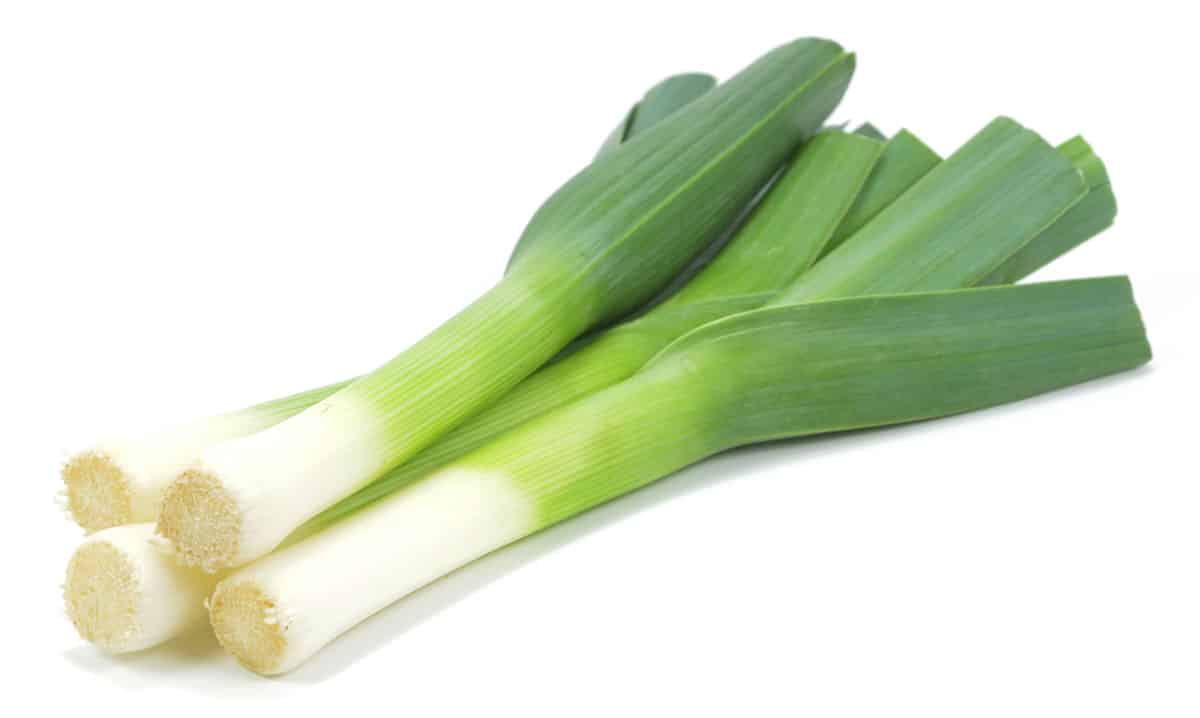
Maui Onion
As the name suggests, this onion comes from Maui where they originated on the slopes of the Mount Haleakala volcano. They only grow in volcanic soil, so they remain rather a local treat. Maui onions are very sweet and juicy, and do not make you cry when you cut them due to their lack of sulfuric acid. Why would you want to cry on Maui anyway. Come on, it’s Maui. The locals eat them mostly raw, but they are said to be great on the grill or caramelized as they get sweeter when cooked.
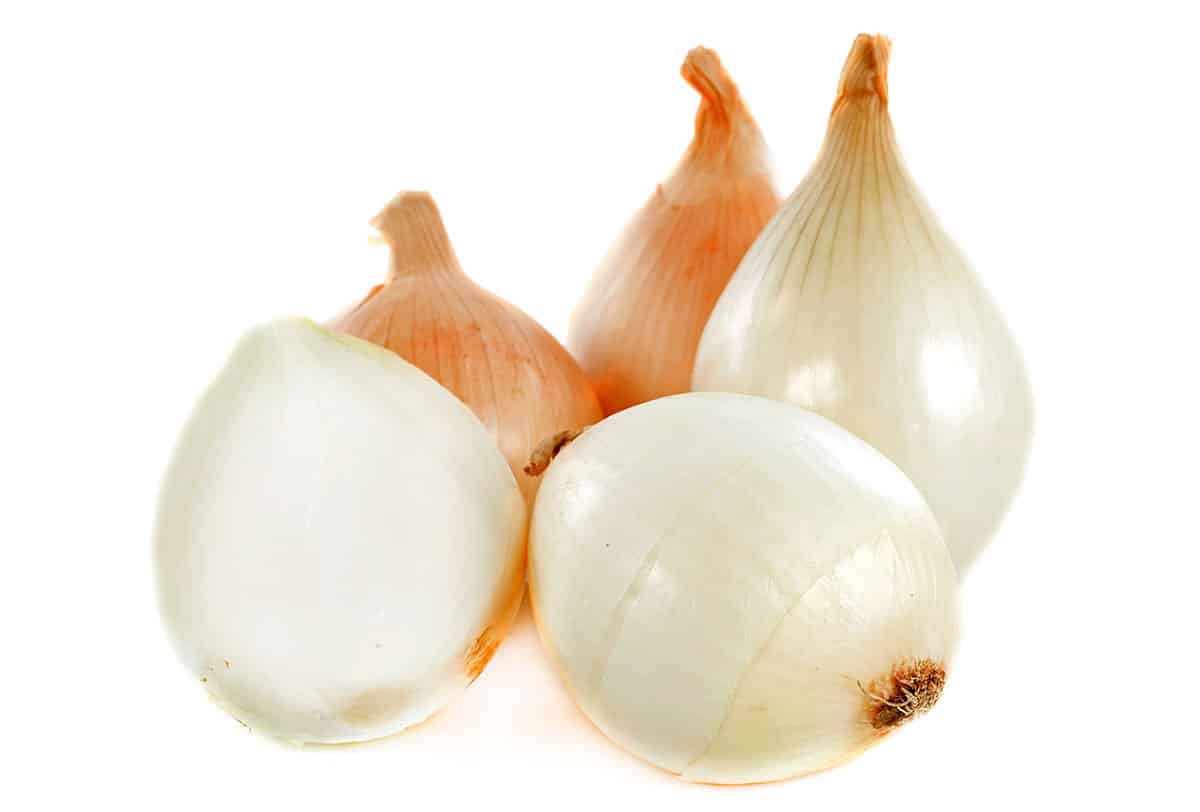
Mayan Sweet Onion
The Mayan sweet onion is a native of the coastal deserts of Peru where the dry climate and low sulfur soil yields these sweet juicy onions. Like Maui onions discussed previously, they just get sweeter with cooking. So while good raw, they are even better caramelized or in onion rings. Also like the Maui onion, Mayan onions are easy to cut as the low sulfur content does not elicit the tear response.
Pearl Onion
Pearl onions are also called Baby onions or Button onions. They are small (¼ – ½” diameter) onions with a sweet mild taste. They have a thin skin which is normally peeled before eating or cooking. You will often find them in the grocery as cocktail onions which alleviates you from having to peel them. Pearls are good roasted, pickled, in stews, or glazed.
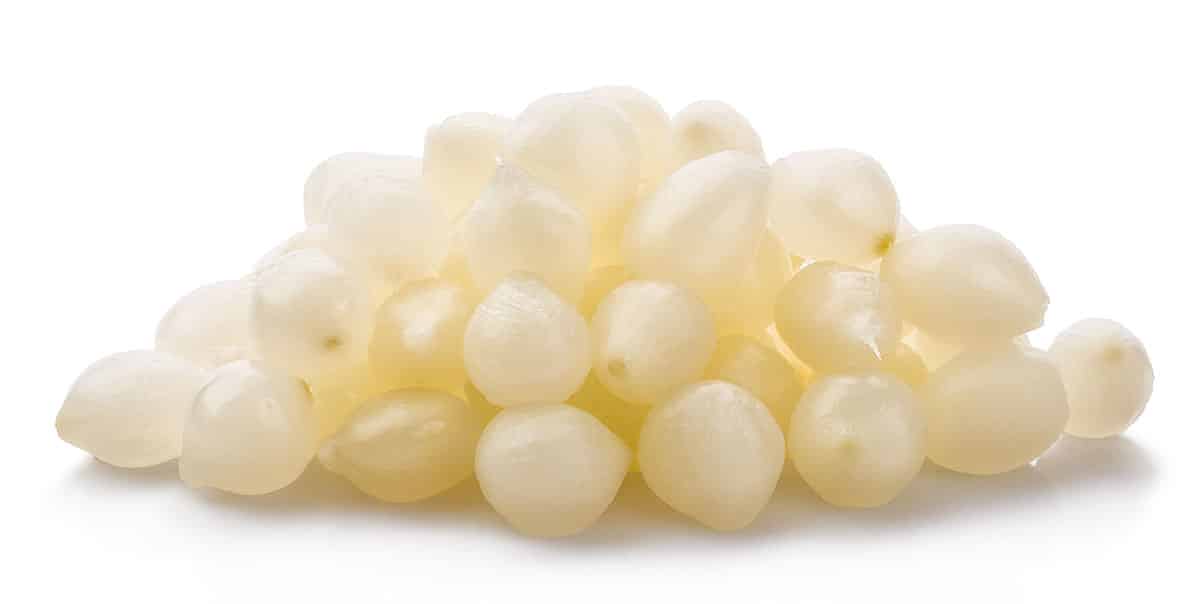
Pickling Onion
Pickling onions are generally small thin layered onions that can actually be one of several onion varieties. They are strong and pungent as pickling them enhances an onion’s already strong flavor. Onions, along with many other foods, have been pickled for thousands of years. Refrigeration is a luxury of the last 100 years or so. Prior to this pickling was the most common way to preserve foods. An added advantage is that pickling adds probiotics to your onions which promotes beneficial bacteria in your gut. If you want to pickle your own, check out our Onion Pickling Guide.
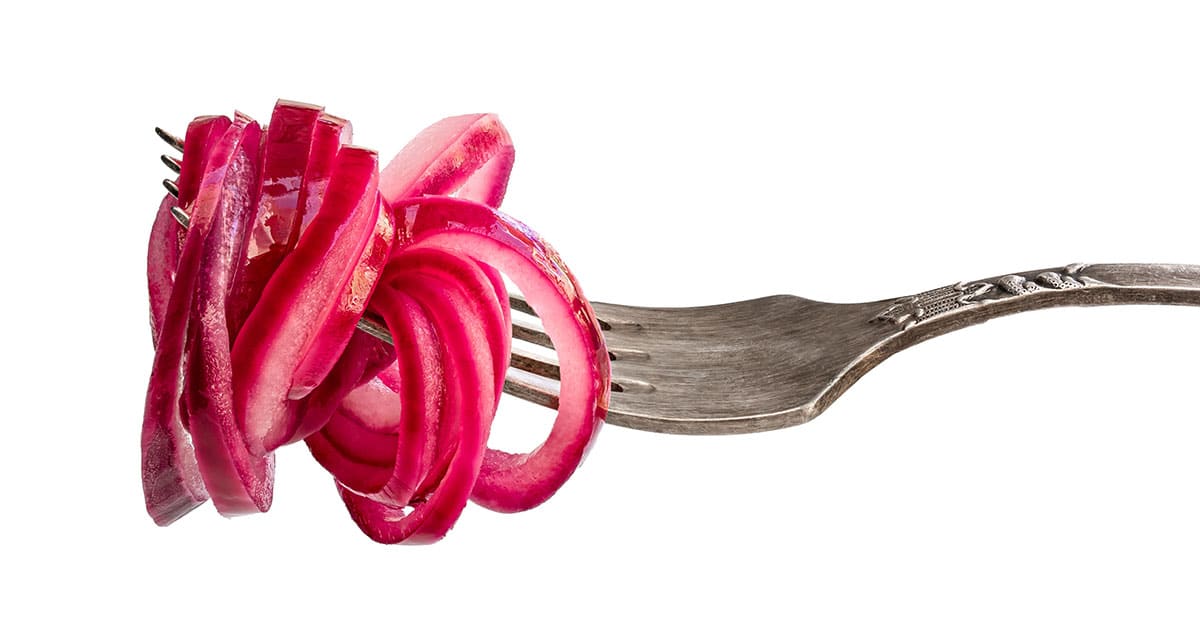
Red Onion
Red onions are known for their sweet mild flavor. They are commonly put on burgers in many restaurants, are great on salads, sandwiches, soups, wraps, saute them for veggie fajitas, roast them with Mediterranean veggies, pretty much anything. If you use them in fajitas or other Mexican cuisine don’t forget to also use them in a healthy guacamole recipe. Red onions are also one of the most commonly pickled onions. If you haven’t tried this before, don’t be afraid to give pickling red onions at home a try.
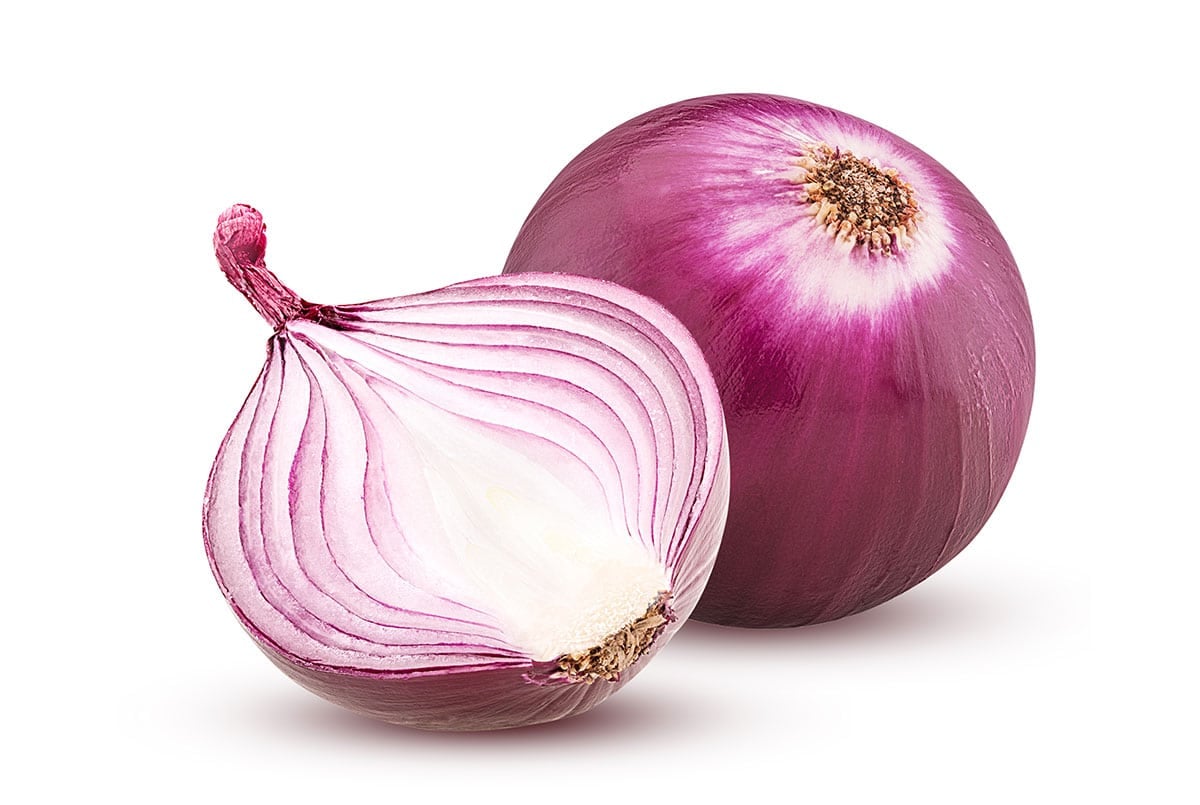
Red Wing Onion
Red Wing onions have an aesthetic deep red color and mild sweet flavor. Like red onions, they can be used in a variety of cooked recipes, but are great raw on salads or in sandwiches.
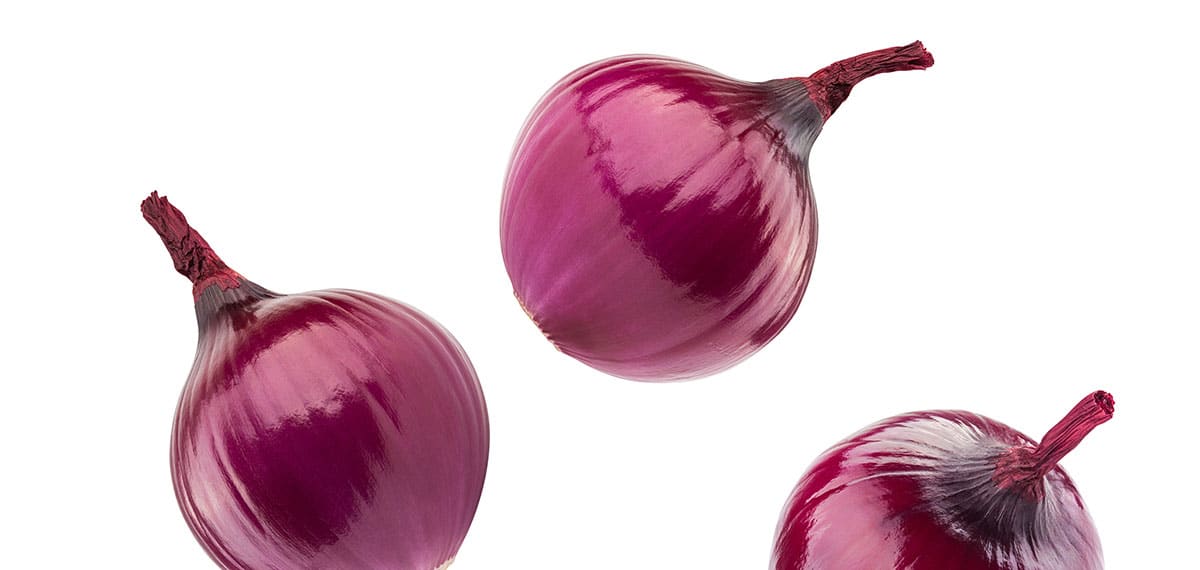
Shallot
We said up front that onions are related to shallots, so what are shallots? Well, they are culinarily fairly similar to onions. Shallots, however, grow in clusters or cloves like garlic does. Shallots are also generally sweeter than most onions which generally have a sharper more pungent taste than shallots. Shallots are often found in French and Asian cuisines and are commonly used in dips, dressing, and in roasts. Our favorite use is in any recipe calling for caramelized onions. Try them as a substitute for red onions in this Caramelized Onion Pizza! Or check out our guide on how to best cut shallots.
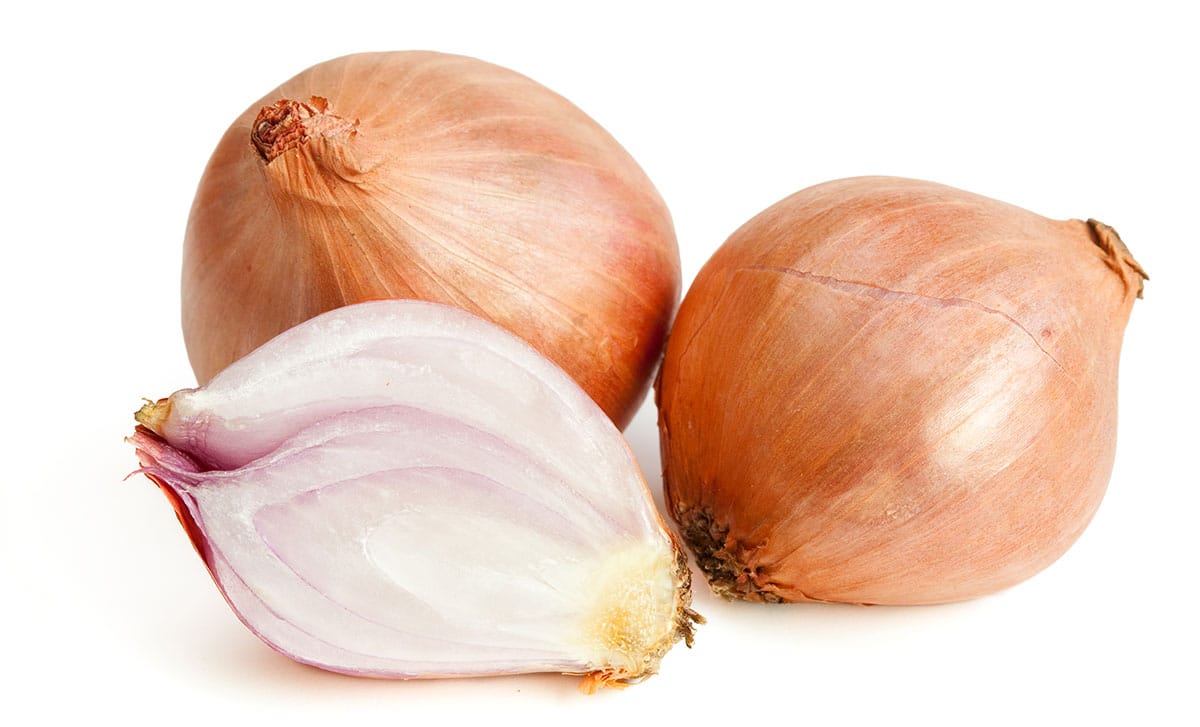
Spanish Onion
Spanish onions are similar to yellow onions and are considered one of the best onions to use in roasts. They are juicy with a sweet taste, so they are also good on sandwiches or in salads.
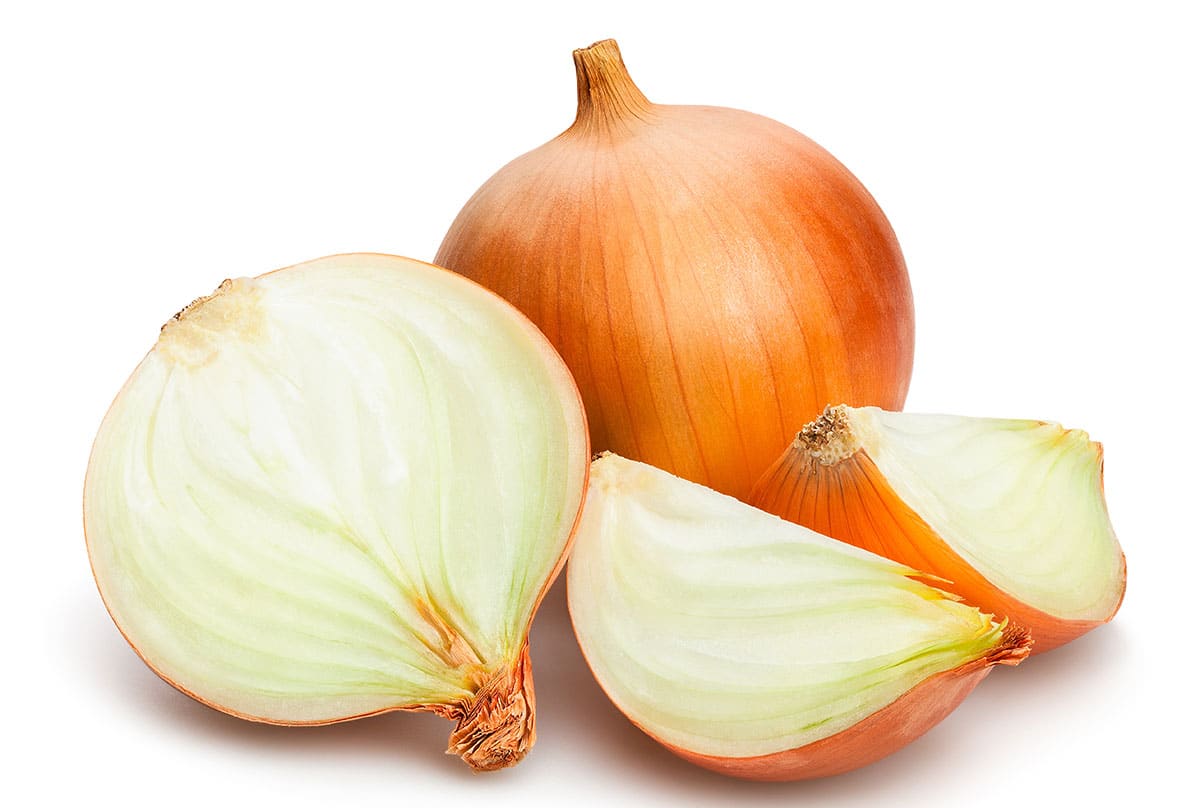
Sweet Onion
Sweet onions are the perfect onion to eat raw. They contain significantly less sulfur than other types giving them their sweet taste. This is also the reason they don’t make you cry when you cut them. Try using them in wraps, sandwiches, and on burgers. Their flavor and larger size also makes them good for onion rings. (We love them in these Upside Down Onion Tarts!)
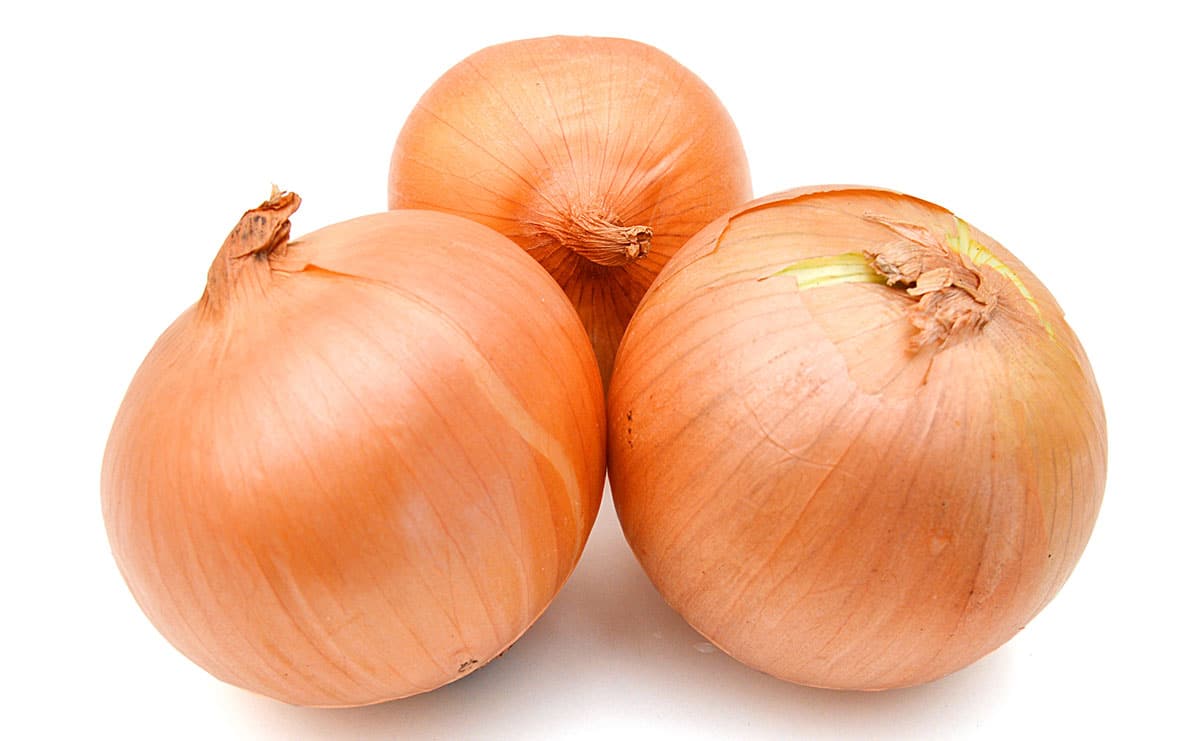
Torpedo Onion
Torpedo onions are an ancient Italian variety. They likely predate the Roman Empire. They are typically cultivated at around 8” long and around 3” in circumference. They are known for their mild sweet flavor, so they can be eaten raw on sandwiches, burgers or salads. They are, however, often pickled, grilled, roasted, sautéed, added to soups, dips, or pasta. They might be a bit difficult to find in the USA, but check your local international market
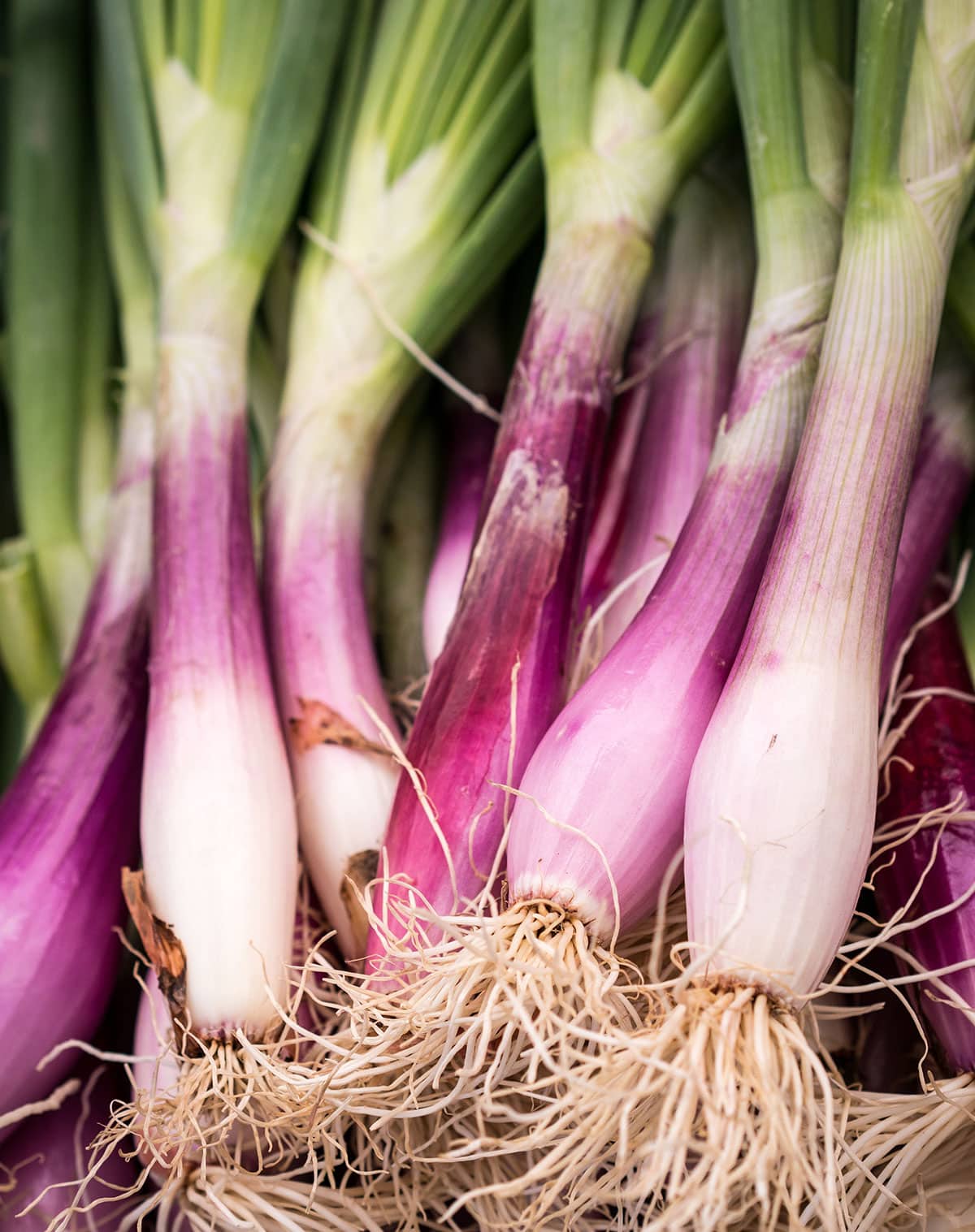
Tropea Lunga Onion
Tropea Lunga onions are another popular Italian variety. Like the torpedo onion, they have an elongated bulb and red skin. They are sometimes described as zesty, and their mind flavor is ideal for raw uses, but they are a popular roasting or grilling onion as well.
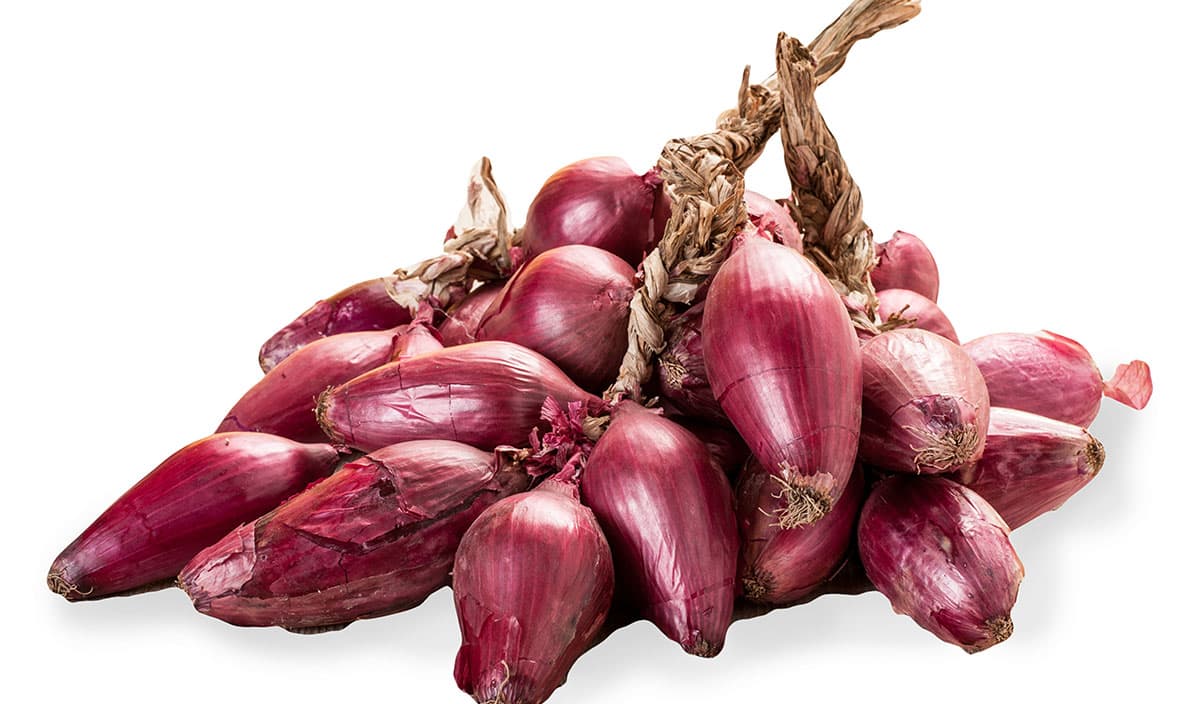
Vidalia Onion
Vidalia onion’s high sugar content make them one of the sweetest onions you can get at your grocery. You can obviously use them in any raw application, but they, like other sweet onions, are great as onion rings. Their sweet taste makes them good for cooking applications if you don’t want to use a sharper onion that might overpower other tastes in your recipe. (Pro-Tip: Use them to make these Air Fryer Blooming Onions!)
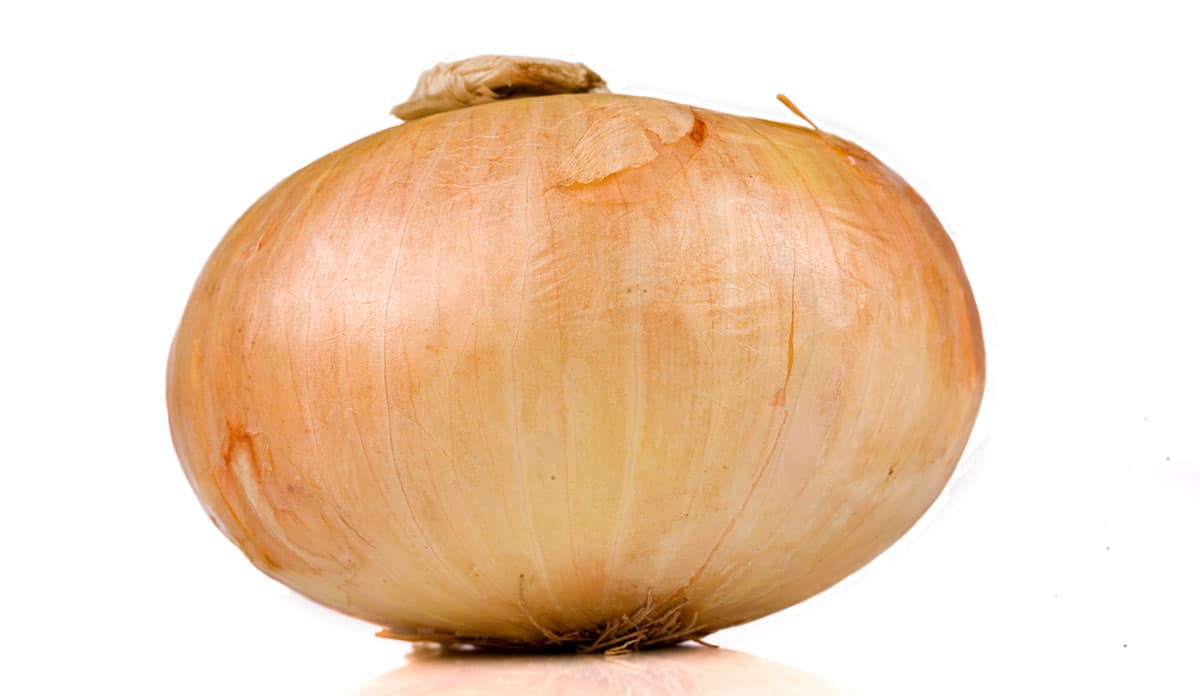
Walla Walla Sweet Onion
Walla Walla onions are native to the Island of Corsica (off Italy), but got their name after seeds were imported to Washington State. They are another popular sweet onion variety that is commonly eaten raw. They are often used in salads, on pizza, and pasta. We like a good sweet onion like the Walla Walla in egg dishes like these frittata, omelet, and quiche recipes. Oh, and Walla Walla are also low in sulfuric acid, so they are another onion that won’t leave you crying in the kitchen.
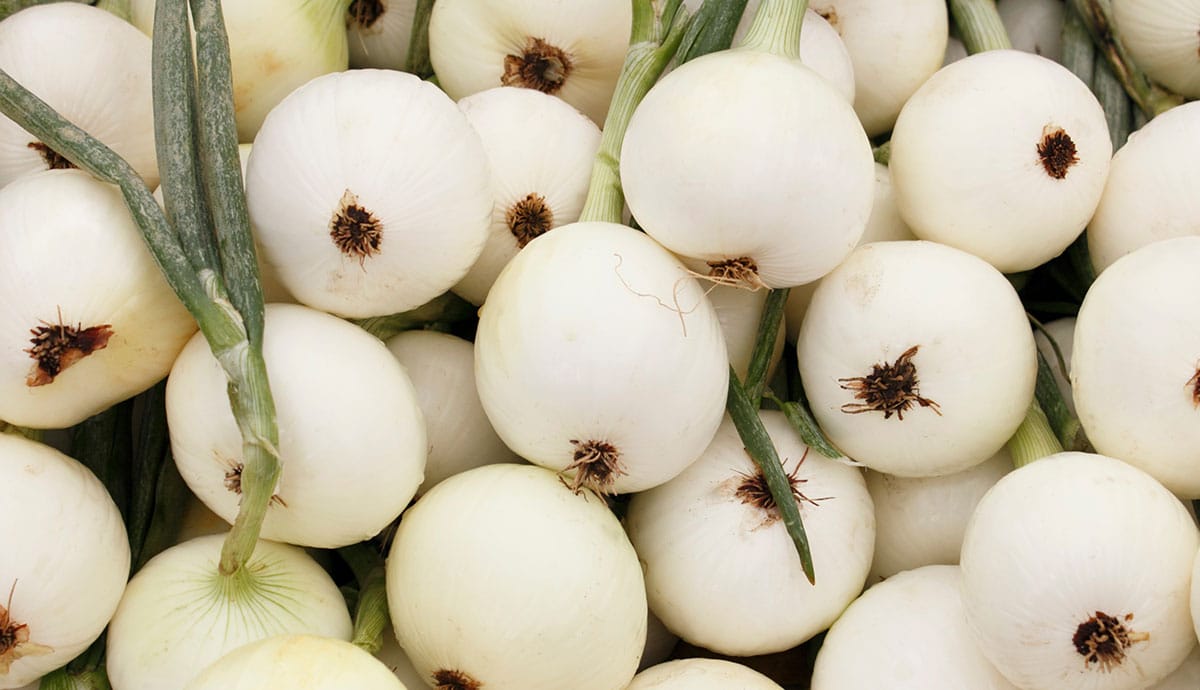
Welsh Onion
The name is a bit of a misnomer. These onions are native to China and have no relation to Wales or Welsh cuisine. The name goes back to a time when the term “Welsh” was used to describe all things foreign. They look like large green onions and are used in a lot of Asian cuisines. You might consider trying them in some of our favorite vegetarian Asian Inspired recipes.
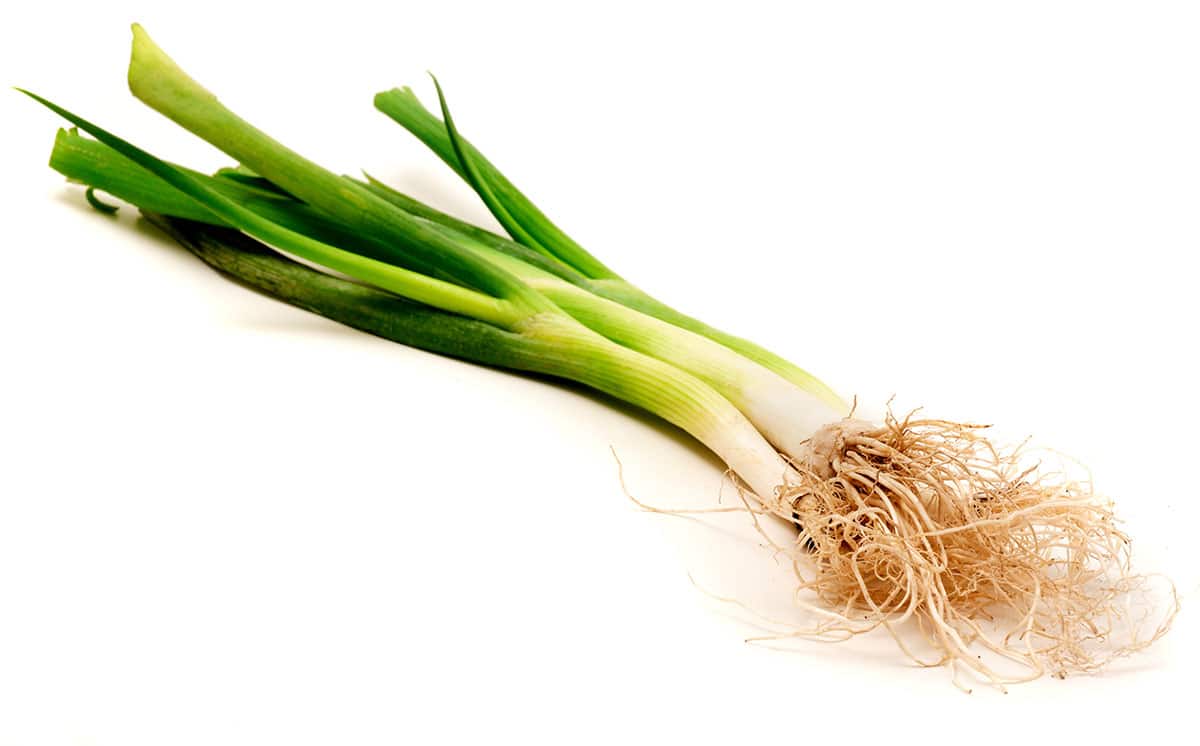
White Onion
White onions are a good multi-purpose option that are always available and affordable. They are pungent with a strong flavor, so use them in recipes that require that. White onions are the most common variety used in Mexican recipes, where they are great in burritos and enchiladas. They are also a good option for Homemade Salsa or Guacamole (and if you order a hotdog w/onions anywhere in America it is a safe bet that the onions will be white). If you haven’t used white onions in a while, be warned they will bring you to tears when you cut them. White onions are also great grilled.
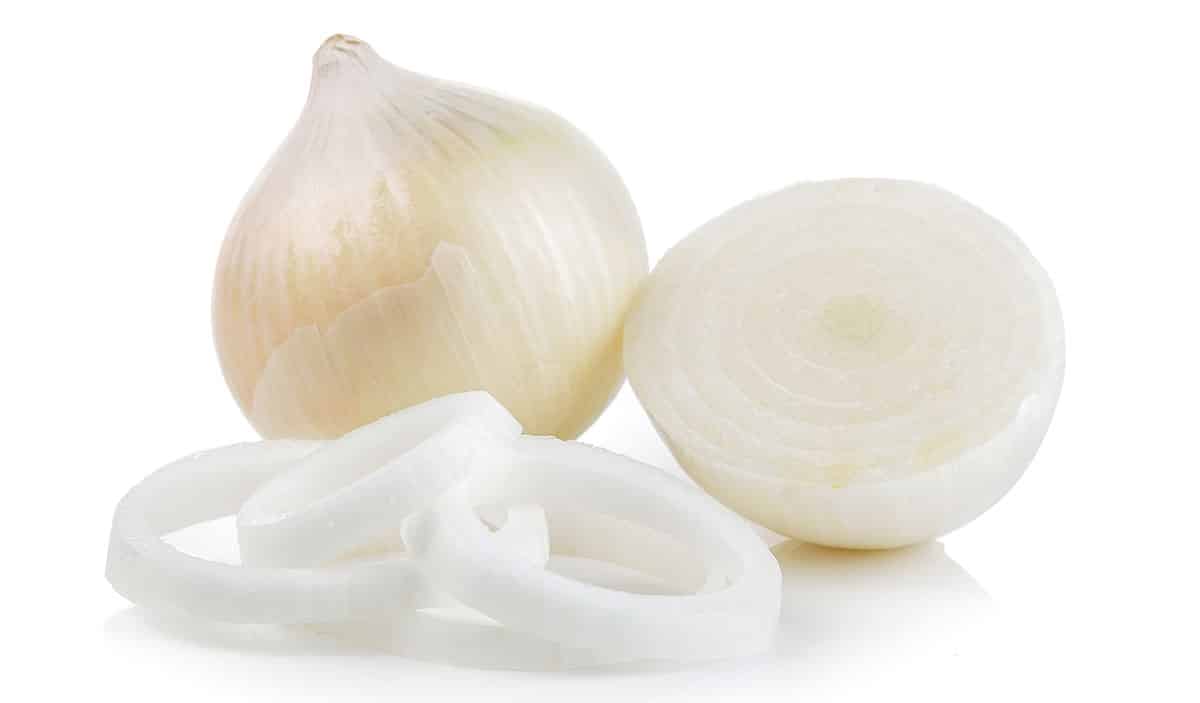
Yellow Onion
Yellow onions are another strong pungent onion. If I could only keep one onion in the pantry, this would be it. You can use them in just about any application. They are probably the most common onion used in chili, and the most commonly used onion on burgers by America’s restaurants. Slice them up and roast them with an assortment of other vegetables (or by themselves, our guide to roasting onions here!), or to make a great dip for your raw veggies try this French Onion Dip recipe.
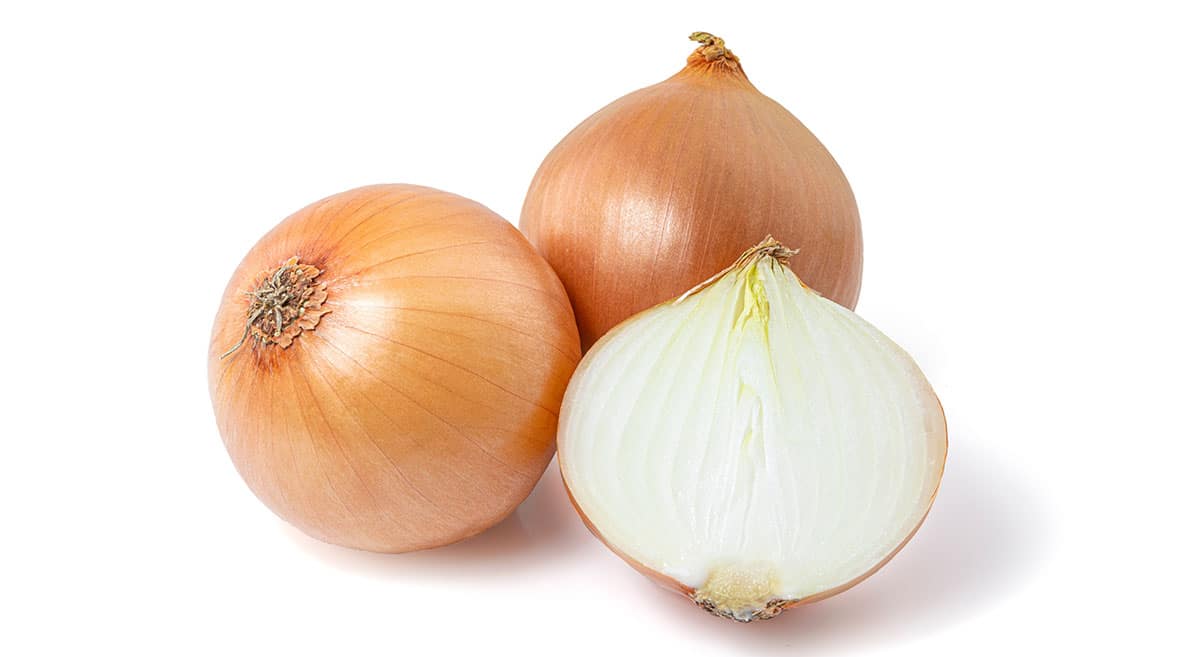
Trivia Answer
Americans eat an average of 20 lbs of onions a year – up from 12 lbs 40 years ago. So, while Donkey from Shrek is right, “not everybody like onions”, most Americans seem to.
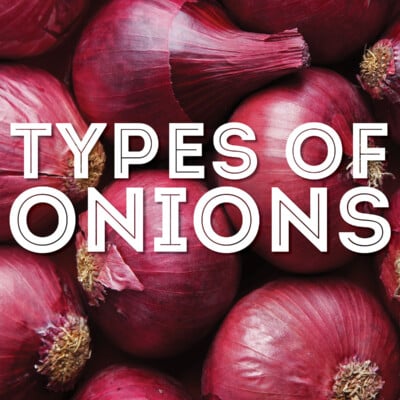
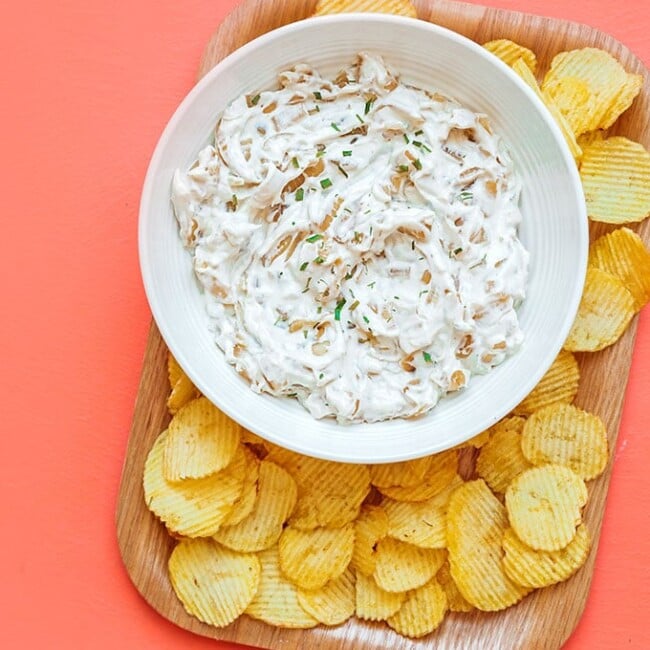
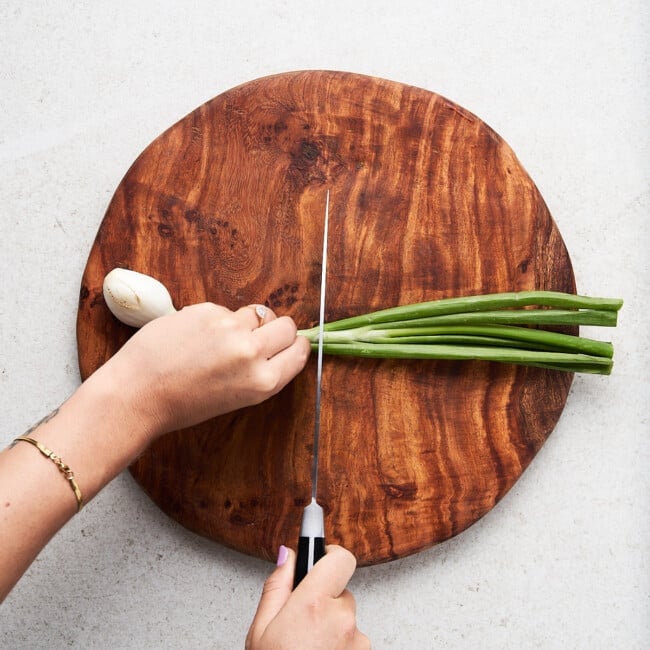
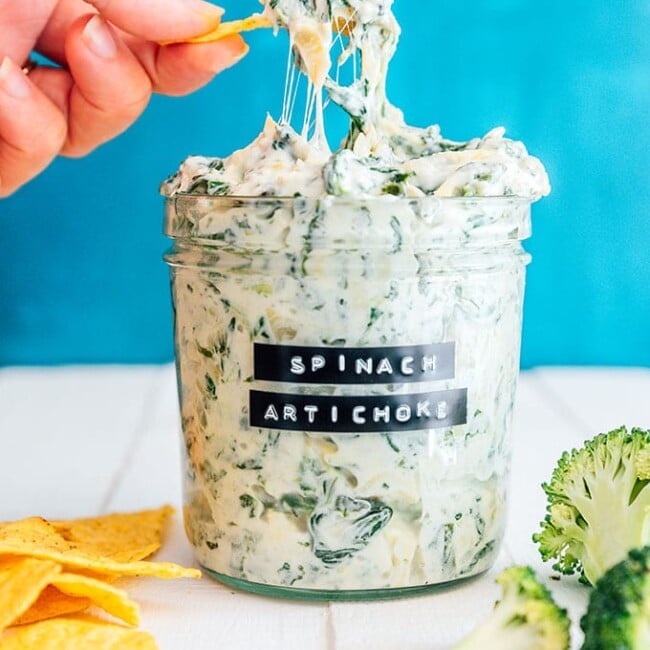

henry c medlock says
Loved it, informative and not too longwinded or technical
Kusi says
Awesome